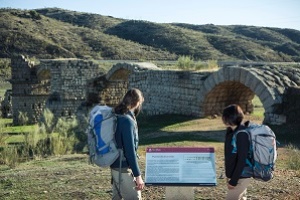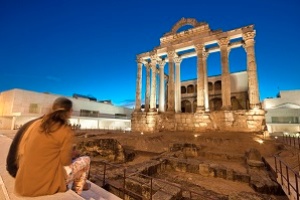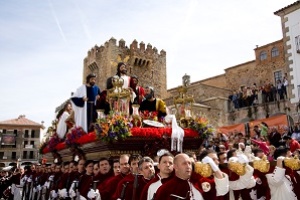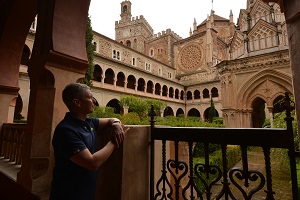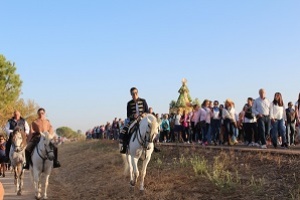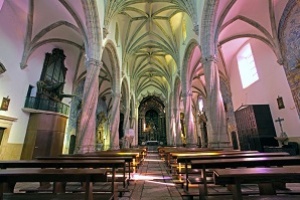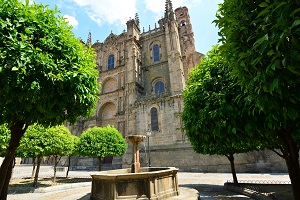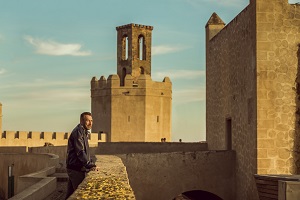Art and culture
Spiritual destination
Extremadura has a wealth of material and intangible heritage when it comes to religion and spirituality. From traditions, festivals and churches to prehistoric monuments, ancestral figures and evocative landscapes.
- Come to Extremadura
- Destino espiritual
Destino espiritual
Extremadura has a wealth of material and intangible heritage when it comes to religion and spirituality. From traditions, festivals and churches to prehistoric monuments, ancestral figures and evocative landscapes.
Our Spiritual Extremadura itinerary takes us to the very origin of humanity. Places of worship and meditation for centuries. Cathedrals, monasteries, convents and churches. Pilgrimage trails. Rituals, devotions and festivals. Jewish quarters and Arab alcazabas. And the fascination that nature can evoke in people.
Prehistory and ancient history
Throughout Extremadura we can find examples of prehistoric settlements, such as the cave of Matravieso in the city of Cáceres, cave paintings and funerary monuments such as the dolmens of Lácara (La Nava de Santiago), Magaxela, Toriñuelo (Jerez de los Caballeros) and Valencia de Alcántara, where more than forty make up one of the most important megalithic complexes in Europe.
The sanctuary and palace of Cancho Roano (Zalamea de la Serena) houses some of the secrets of the history of the enigmatic Tartessus people.
The stamp of the Roman Empire is visible across the region and not only in the civil works such as the Alcántara bridge, the arch of Cáparra or the theatres of Mérida, Medellín and Regina but also in religious buildings like the temple of Diana in the regional capital, where sacrifices and open-air ceremonies were held to honour the Roman gods.
Singular temples: from small temples to cathedrals
The legacy of Christian religion in the heritage of Extremadura in magnificent and varied. The cathedrals of Plasencia (old and new), Badajoz and Coria, the basilica of Santa Eulalia de Mérida, where you can see the original paleo Christian church and the remains of the old Visigoth basilica; the co-cathedral of Cáceres and the monasteries of Guadalupe (World Heritage Site) and Yuste (European Heritage Site) are beautiful temples of great historic importance.
There is a long list of singular buildings like the Basilica of Santa Lucía del Trampal (Alcuéscar), the only Visigoth temple still standing in the southern half of Spain; the convent of El Palancar (Pedroso de Acim), considered one of the smallest in the world, founded by San Pedro de Alcántara; the convent of San Benito de Alcántara, which was the headquarters of the Order of Alcántara; the church of Magdalena de Olivenza, one of the finest examples of Portuguese Manueline art; the Hermitage of Ara (Fuente del Arco), a mudejar gem known as the Extremeñan “Sistine Chapel” due the 26 frescoes depicting scenes from Genesis painted on the dome; the church of the Consolación in Azuaga, the largest temple in the province of Badajoz after Palencia cathedral; and the Santiaguista Convent and the Tentudía Monastery, both in Calera de León.
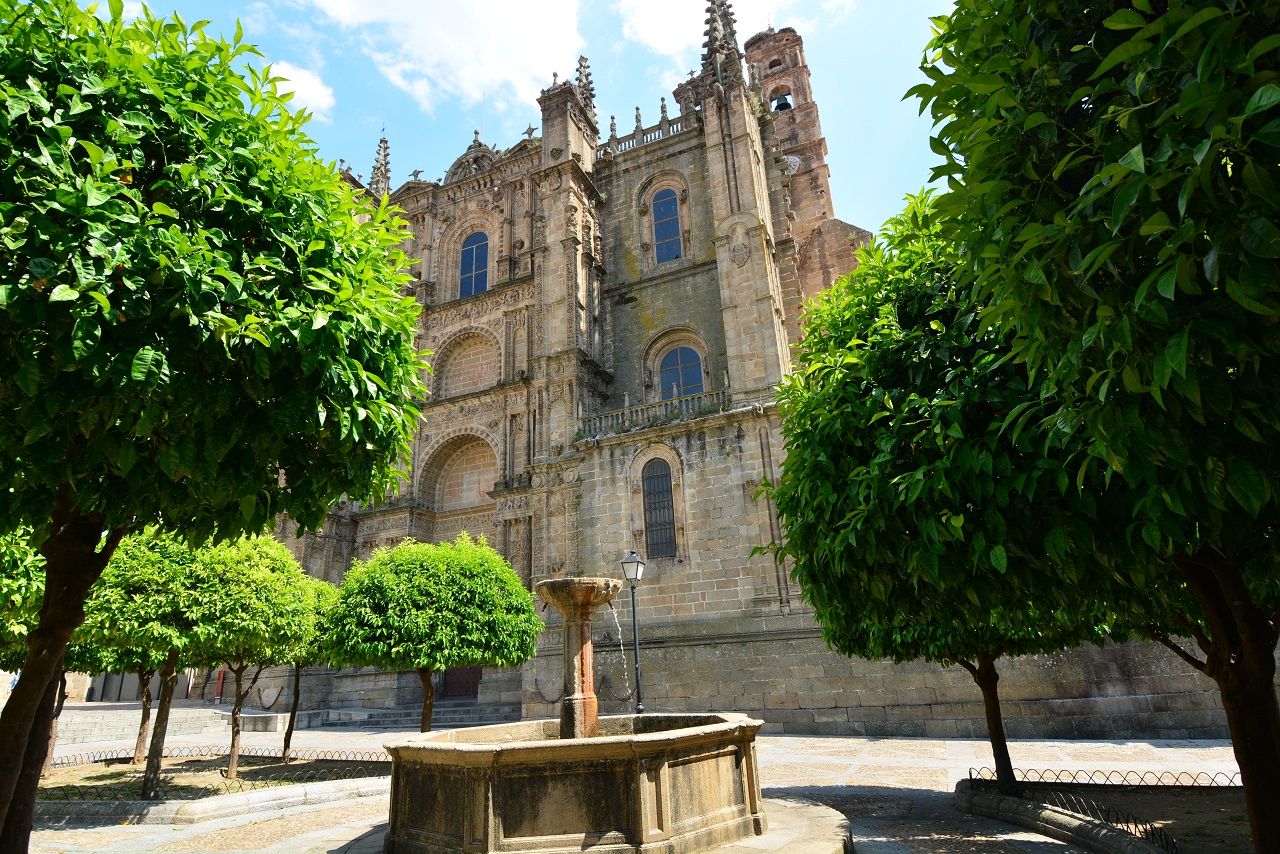
Paths of Faith
Throughout history, pilgrims have come to the Basilica of Santa Eulalia in Mérida, erected in in honour of the martyr of Mérida, Coria Cathedral, which houses the Holy Shroud, used by Jesus at the Last Supper with the apostles, and the Monastery of Cristo de la Victoria in Serradilla.
However, the principal destination for pilgrims to Extremadura has always been Guadelupe. Historical figures like Isabella the Catholic, Christopher Columbus, Saint Teresa of Jesus and Miguel de Cervantes, among others, have travelled to the sanctuary of Las Villuercas to worship the Virgin.
The old roads to Guadelupe, numbering up to eleven across Extremadura, are experiencing a new lease of life thanks to the refurbishment by public entities and different groups. Many pilgrims used these routes during the Años Santos Guadalupenses or holy years, which are when the celebration of the liturgical solemnity of the Virgin (6 September) falls on a Sunday. 2020 is once such year and Extremadura celebrates it Jubilee Year until September 2021.
Three routes of the Camino de Santiago also pass through the region: the Vía de la Plata, which crosses the region from Monesterio (Badajoz) to Baños de Montemayor (Cáceres) following the route of the old Roman road; the Camino Mozárabe, which runs from Córdoba, where several pilgrimage routes from Almería, Málaga, Granada and Jaén meet, to Mérida, where it joins up with the Vía de la Plata; and, finally, the Vía de la Estrella, which starts in Cáceres and ends in the Portuguese city of Braga, where it joins the Portuguese Camino.
Easter Week and Religious Festivals
Processions in beautiful historic centres. Carvings of great artistic merit. The enthusiastic tradition of fraternities and brotherhoods. Unique traditions like “Los Empalaos” in Valverde de la Vera (a Festival of National Tourist Importance).
Extremadura experiences Easter Week, or Semana Santa, with real passion and enthusiasm. The festivities in Cáceres and Mérida have been declared Festivals of International Tourist Interest. Those in Badajoz and Jerez de los Caballeros have been declared of National Interest. Also worth a mention are the Easter celebrations in Plasencia, Trujillo and Zafra, the Living Passion in Oliva de la Frontera (Holy Thursday), a Festival of National Tourist Interest; La Carrerita in Villanueva de la Serena (Easter Sunday); the Romería de la Virgen in Piedraescrita de Campanario (Easter Monday); and the Day of Light in Arroyo de la Luz (Easter Monday).
Over the course of the year, the Extremeñan calendar is filled with religious celebrations: la Carrera de San Antón in Navalvillar de Pela (January), Los Negritos de San Blas in Montehermoso (February), Las Candelas in Almendralejo (February), the Octava del Corpus in Peñalsordo (June), Corpus Christi in San Vicente de Alcántara (June), La Velá in Don Benito (October), La Encamisá in Torrejoncillo (December) and Los Escobazos in Jarandilla de la Vera (December) and many more.
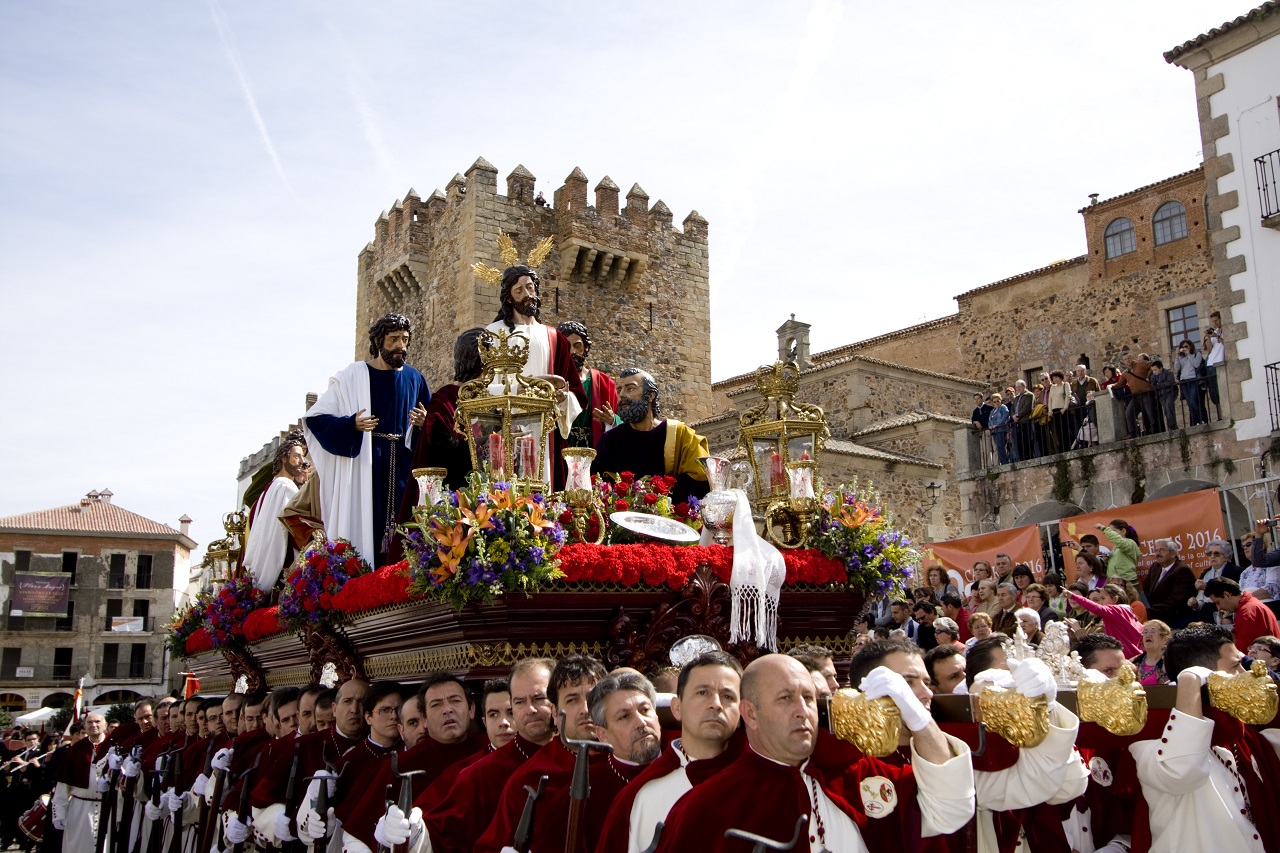
Jewish and Moorish Heritage
Extremadura cannot be understood without its Jewish and Moorish heritage, visible in its monuments, its traditions and its cooking.
In Hervás, Valencia de Alcántara, Plasencia, Cáceres, Alburquerque and Burguillos del Cerro you can walk through the narrow streets of old Jewish quarters where you’ll find houses with their characteristic doorways, doorposts, lintels and pointed arches. Among other religious elements, in Valencia de Alcántara you’ll find a 15th century synagogue in the Gothic-Jewish quarter and Plasencia is home to the best conserved Jewish cemetery in Extremadura.
The Moorish stamp on the region is also visible. The citadel of Mérida, commissioned in the year 835, is the oldest in Spain, while the one in Badajoz, with 1,200 metres of walls and an area of eight hectares is the biggest in Europe. Both fortresses are built on the banks of the Guadiana.
Further north is the historic centre of Cáceres, where you’ll find one of the most spectacular aljibes árabes or wells in all of Spain, located in the Palacio de las Valetas, a building that forms part of the Museum of Cáceres.
Ancestral figures
Coinciding with the festival of San Sebastián, the jarramplas and carantoñas take to streets of Piornal and Acehúche, respectively, with their strange costumes. They are the stars of two Festivals of National Tourist Interest, the origin of which have been lost over time.
Jarramplas, perhaps an animal thief, a devil or a mythological figure, dressed in a suit of multicolour bands, two horns and a large nose, makes his way through the streets and is pelted with turnips by locals and visitors alike. He symbolises an evil that must be eradicated.
Meanwhile in Acehúche, the carantoñas, dressed in horrible masks and animal skins, accompany San Sebastián on his procession through the village. It is said that they represent the wild beasts of the forest and that upon encountering the martyr, rather than devouring him, they revere him.
Landscapes to make you think
Nature and spirituality go hand in hand. And Extremadura, with one of the most diverse and best-preserved natural environments in southern Europe, has a lot to offer for those looking for beauty, rest and relaxation.
These are just some of the essential sights: Monfragüe (National Park and Biosphere Reserve); Tagus International (Natural Park and Biosphere Reserve); Las Hurdes and the meanderings of the Melero; the Jerte Valley and its marvellous hidden gems like the Garganta de los Infiernos or the Mirador de la Memoria viewpoint; the Villuercas-Ibores-Jara Geopark and its 40 plus ‘geosites’, so-called for their geological and natural importance; the Sierra de San Pedro; La Siberia (Biosphere Reserve), with its forests and inland seas; Cornalvo (Natural Park); and the immense dehesas south of Badajoz.
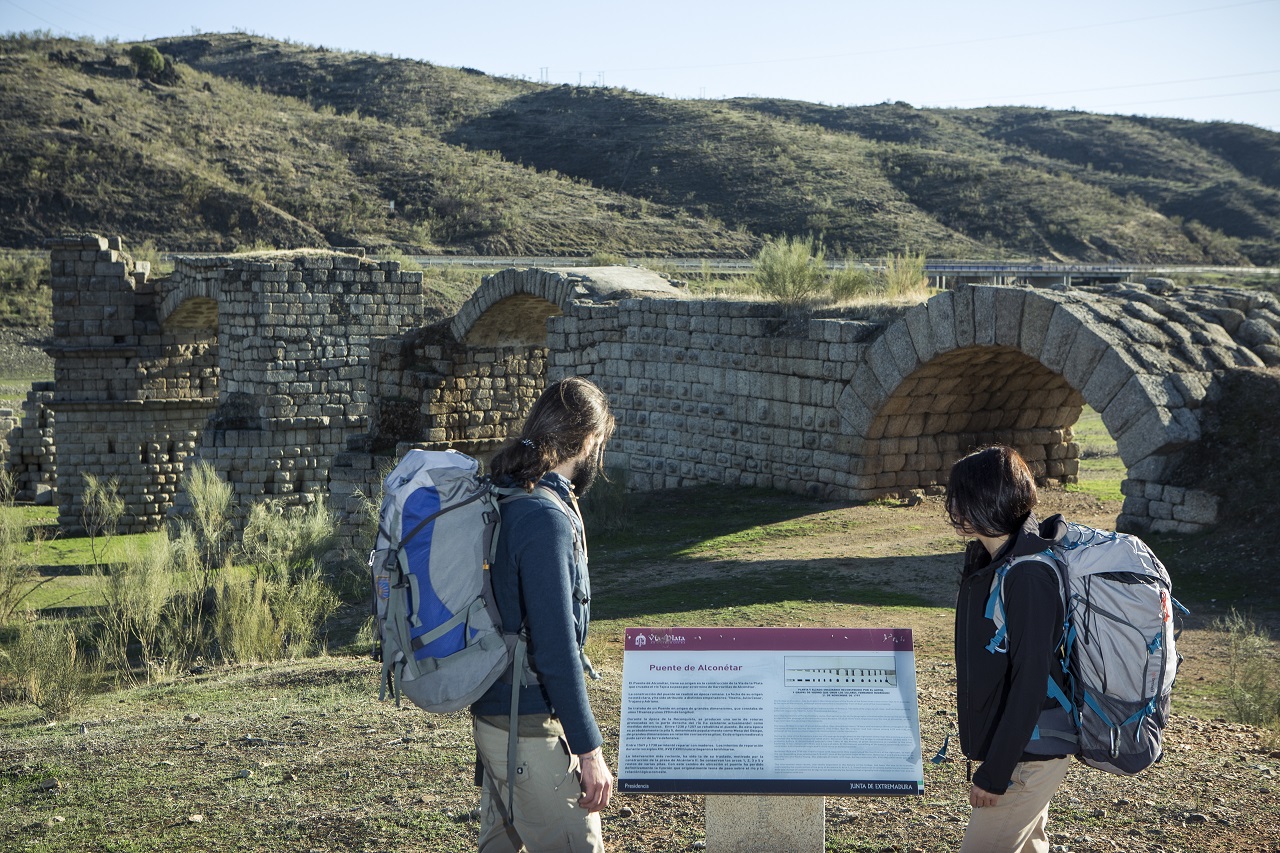
Spiritual destination guides
Plasencia and north of Extremadura
Cáceres and surrounding
Mérida, Badajoz and surrounding
Zafra and south of Extremadura

